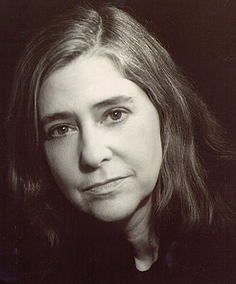Biografia
Margaret Elaine Heafield was born in Paoli, Indiana on 17 August 1936. After graduating in mathematics, she wanted to continue her studies, but had to leave her studies for a period so that her husband could finish his degree at Harvard, and work as a Mathematics and French teacher in a secondary school. In 1958 she obtained a degree in Mathematics and Philosophy.
She moved to Massachusetts where she took a position at MIT as a software developer. From 1961 to 1963, she worked for the Sage Philco-Ford Project, where she used radar to track unknown aircraft trajectories. She was one of the programmers who wrote software for the prototype AN/FSQ-7 computer (the XD-1), used by the US Air Force to search for possibly hostile aircraft. She worked to gain first-hand experience at a time when computer science and software engineering did not exist either as disciplines or as university courses.
Margaret Hamilton was part of the Charles Stark Draper Laboratory at MIT, where in 1965 she became responsible for the development of the flight software on board the Apollo mission computers that the laboratory team worked on, and later directed and supervised the developments of the Skylab space station mission.
One of her major achievements in leading the development of the operating system for the Apollo missions was the exception and asynchronous task loading system that played a crucial role just before the Apollo 11 moon landing, because when the astronauts were preparing to descend, the computer started throwing errors 1201 and 1202.
For a few minutes they did not know whether to proceed with the moon landing because of the error displayed by the computer, but Hamilton's team quickly found in their notes that this code meant that the computer was clearing the task list of low-priority processes to devote all processing to the descent functions. Once the question of what the error message meant was solved, the descent to the moon was successful.
It was later discovered that the error messages were not due to a software problem. In the list of processes given to Buzz Aldrin for instrument preparation, he was instructed to turn on a radar that was not used during the descent, but could be useful in the event of an abort. This radar began to fill the system processing with measurement tasks due to all kinds of readings coming in from its sensors, and because Hamilton and her team had figured out how to solve such a problem, it did not result in an incident.
Another notable moment during the design phase of the navigation system for the Apollo missions was the detection of a bug when Lauren, Margaret Hamilton's daughter, was playing with the computer simulation system, and accidentally activated the "pre-launch" program (p01) during a mission, causing a system error that resulted in the deletion of the navigation data already loaded.
Given the incident, Hamilton proposed a modification to the system to prevent it from happening on a real mission, but the administration replied that they would not consider the possibility as the astronauts were trained to avoid such human errors. However, during the Apollo 8 mission, and despite Hamilton's clear documentation of the problem, the astronauts accidentally ran p01 in the middle of the mission and went into critical mode with no flight data, but thanks to Hamilton it was documented how to resend the navigation data in case this accident occurred. Shortly after the incident, the changes originally proposed by Hamilton were approved for the following missions.
In 1986, she became the founder and CEO of Hamilton Technologies, Inc. She coined the term "software engineering" to distinguish between hardware work and other engineering. Although her idea was not well received at first, eventually the software generated the same respect as other disciplines.
On 22 November 2016, Hamilton was awarded the Presidential Medal of Freedom for her work at NASA during the Apollo missions.
Her approach to software design was pioneering for the time, as the requirements of robustness and fault tolerance were a priority for the safety and survival of astronauts during the Moon voyages, which is why Margaret Hamilton is considered by many to be one of the first people to become a Site Reliability Engineer.
From 1961 to 1963, she worked for the Sage Philco-Ford Project, where she used radar to track unknown aircraft trajectories. She also wrote code for the Air Force Cambridge Research Laboratory.
Source: https://es.wikipedia.org/wiki/Margaret_Hamilton_(cient%C3%ADfica) (17/02/2022)

